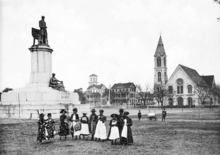
John Caldwell Calhoun was an American statesman and political theorist who served as the seventh vice president of the United States from 1825 to 1832. Born in South Carolina, he adamantly defended American slavery and sought to protect the interests of white Southerners. Calhoun began his political career as a nationalist, modernizer and proponent of a strong federal government and protective tariffs. In the late 1820s, his views changed radically, and he became a leading proponent of states' rights, limited government, nullification, and opposition to high tariffs. Calhoun saw Northern acceptance of those policies as a condition of the South's remaining in the Union. His beliefs heavily influenced the South's secession from the Union in 1860 and 1861. He was the first of two vice presidents to resign from the position, the second being Spiro Agnew, who resigned in 1973.
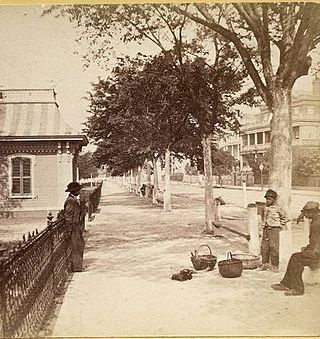
White Point Garden is a 5.7 acre public park located in peninsular Charleston, South Carolina, at the tip of the peninsula. It is the southern terminus for the Battery, a defensive seawall and promenade. It is bounded by East Battery, Murray Blvd., King St., and South Battery.
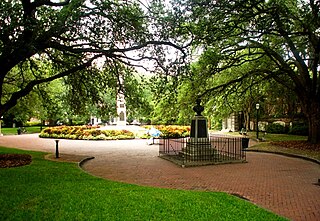
Washington Square is a park in downtown Charleston, South Carolina. It is located behind City Hall at the corner of Meeting Street and Broad Street in the Charleston Historic District. The planting beds and red brick walks were installed in April 1881. It was known as City Hall Park until October 19, 1881, when it was renamed in honor of George Washington. The new name was painted over the gates in December 1881.

Marion Square is greenspace in downtown Charleston, South Carolina, spanning six and one half acres. The square was established as a parade ground for the state arsenal under construction on the north side of the square. It is best known as the former Citadel Green because The Citadel occupied the arsenal from 1843 until 1922, when the Citadel moved to the city's west side. Marion Square was named in honor of Francis Marion.

The South Carolina State House is the building housing the government of the U.S. state of South Carolina, which includes the South Carolina General Assembly and the offices of the Governor and Lieutenant Governor of South Carolina. Located in the capital city of Columbia near the corner of Gervais and Assembly Streets, the building also housed the Supreme Court until 1971.
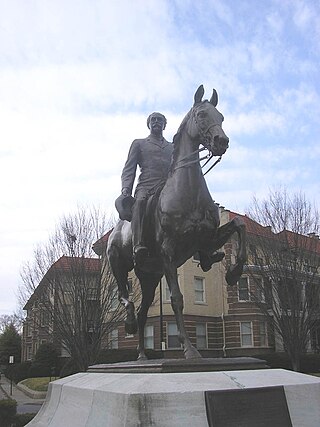
The John B. Castleman Monument, within the Cherokee Triangle of Louisville, Kentucky, was unveiled on November 8, 1913. The model, selected from a competition to which numerous sculptors contributed, was designed by R. Hinton Perry of New York. The statue was erected to honor John Breckinridge Castleman at a cost of $15,000 by popular subscription from city, state, and other commonwealths. The statue is made of bronze, and rests on a granite pedestal. It stands 15-feet high, with a base of 12×20 feet. The monument was placed on the National Register of Historic Places on July 17, 1997, as part of the Civil War Monuments of Kentucky MPS. There have been attempts to remove the statue since January 2019 due to the fact that Castleman was a Major of the Confederate army. The monument was removed on June 8, 2020, and is pending cleaning and relocation to Castleman's burial site.
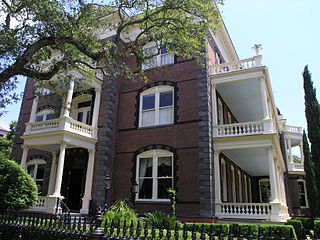
The Williams Mansion is a Victorian house at 16 Meeting St., Charleston, South Carolina. The mansion is open for public tours.

John J. Tecklenburg is an American businessman and politician. He served two terms as mayor of Charleston, South Carolina, sworn in on January 11, 2016. Tecklenburg was defeated in 2023 by former state legislator William S. Cogswell Jr. He became the first mayor of Charleston to lose a reelection campaign since 1959.

There are more than 160 monuments and memorials to the Confederate States of America and associated figures that have been removed from public spaces in the United States, all but five of which have been since 2015. Some have been removed by state and local governments; others have been torn down by protestors.
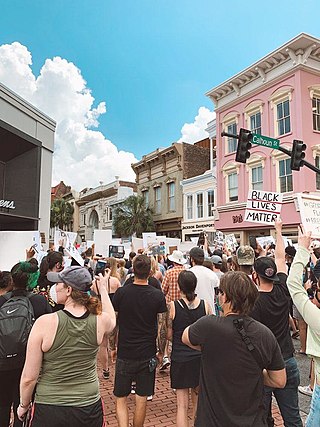
This is a list of protests in South Carolina related to the murder of George Floyd.

A bronze statue of Christopher Columbus was installed on the grounds of the Minnesota State Capitol in Saint Paul, Minnesota in 1931. The 10-foot statue was created by Italian American Carlo Brioschi.
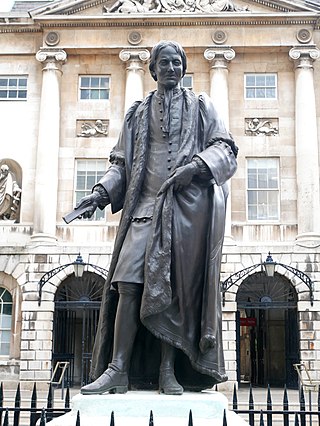
A statue of Thomas Guy stands in the forecourt of Guy's Hospital in the borough of Southwark in Central London. The statue is Grade II listed.

A number of statues and memorials were the subject of protests and petitions during the George Floyd protests in the United Kingdom in 2020.
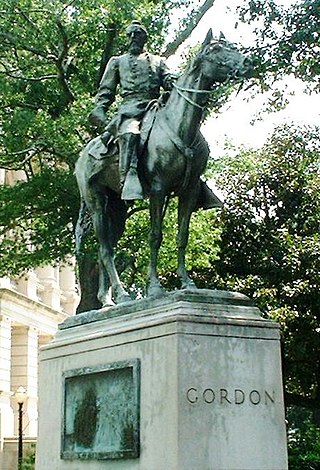
The equestrian statue of John Brown Gordon is a monument on the grounds of the Georgia State Capitol in Atlanta, Georgia, United States. The monument, an equestrian statue, honors John Brown Gordon, a general in the Confederate States Army during the American Civil War who later become a politician in post-Reconstruction era Georgia. Designed by Solon Borglum, the statue was dedicated in 1907 to large fanfare. The statue has recently become a figure of controversy over Gordon's racist views and associations with the Confederacy, with some calling for its removal.
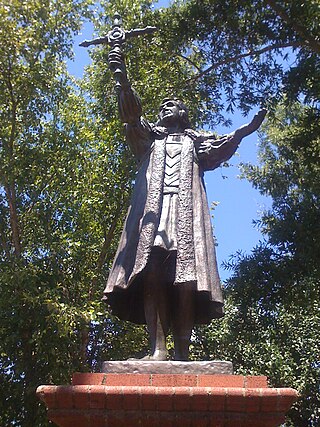
A statue of Christopher Columbus was installed in Columbia, South Carolina, United States as part of the Columbus Quincentenary. The memorial was removed and placed into storage in June 2020.

Confederate Defenders of Charleston is a monument in Charleston, South Carolina, United States. The monument honors Confederate soldiers from Charleston, most notably those who served at Fort Sumter during the American Civil War. Built with funds provided by a local philanthropist, the monument was designed by Hermon Atkins MacNeil and was dedicated in White Point Garden in 1932. The monument, standing 17 feet (5.2 m) tall, features two bronze statues of a sword and shield-bearing defender standing in front of a symbolic representation of the city of Charleston. In recent years, the monument has been the subject of vandalism and calls for removal as part of a larger series of removal of Confederate monuments and memorials in the United States.
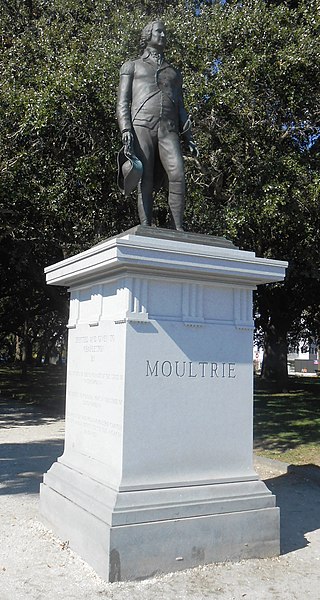
The William Moultrie statue is a monumental statue in Charleston, South Carolina, United States. Located in White Point Garden, the statue was unveiled in 2007 and honors William Moultrie, a general in the American Revolutionary War.

The Denmark Vesey Monument is a monumental statue in Charleston, South Carolina, United States. The monument was erected in 2014 in Hampton Park and honors Denmark Vesey, a freedman who lived in Charleston and was executed in 1822 for plotting a slave revolt. It was designed by American sculptor Ed Dwight.
The South Carolina Heritage Act is a South Carolina statute that forbids the removal or alteration of historic monuments located on public property in South Carolina as well as the rededication of any public areas or structures named after a historic person or event. The historic monuments protected include war monuments as well as monuments representing Native American and African American history.


